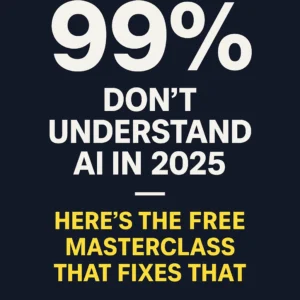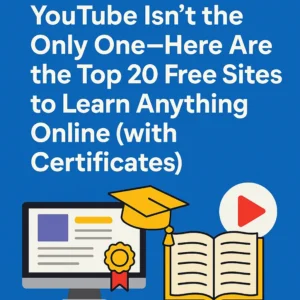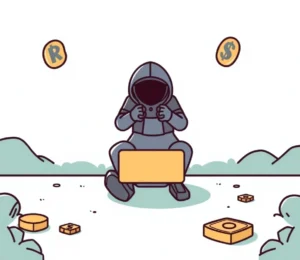How To Reenter The Job Market After 20 Years?
By TOI Staff
June 27, 2023
Update on : June 27, 2023

One of the hardest things to do is write your resume when you have had a 20 year break from your career. You try to write a resume, and you visit Job Fairs. You leave with employers basically telling you that they consider you no different than somebody who just graduated from high school. It is depressing. It is frustrating. And it makes you want to just go home and chill playing some casino games using your Everygame casino login.
But as Dr. Seuss says,
“On you will go though the weather be foul. On you will go though your enemies prowl. Onward up many a frightening creek, though your arms may get sore and your sneakers may leak.”
“On and on you will hike. And I know you will hike far and face up your problems wherever they are.”
“And will you succeed? Yes, you will indeed. 98 and 3/4 percent guaranteed!”
So let’s begin your journey to success …
What is the best way to create a resume when returning to the job market after 20 years?
Returning to the job market after a long gap can seem challenging, but with the right approach, you can create a compelling resume that highlights your skills and experiences effectively. Here’s a step-by-step guide to help you create a resume after a 20-year gap.
1. You need to understand current resume trends. Take some time to research and familiarize yourself with modern resume formats and trends. Resume styles may have changed over the years, so it’s important to update yourself on the current best practices. (add some description here)
2. You need to choose a suitable resume format. There are several resume formats to choose from, including chronological, functional, and combination formats. Given your 20-year gap, a combination format might be most effective. This format allows you to emphasize your skills and achievements while still providing a brief work history.
3. Start with a summary or objective statement. Begin your resume with a summary or objective statement that succinctly captures your career goals, relevant skills, and any unique qualifications you possess. This section should grab the reader’s attention and make a strong first impression.
4. Highlight relevant skills. Identify the skills you’ve gained during your time away from the job market, as well as any skills you acquired before your break that are still relevant. Consider both hard skills (technical abilities) and soft skills (such as communication or leadership). Emphasize transferable skills that can be applied to the positions you’re interested in.
5. Focus on recent experience. If you engaged in any relevant activities during your career break, such as volunteering, freelancing, or personal projects, include them in a separate section titled “Relevant Experience” or “Professional Projects.” Describe your accomplishments and demonstrate how they relate to the positions you’re targeting.
6. List your professional experience. Create a section that outlines your previous work history. Given the long gap, it’s acceptable to provide a condensed version. Include the names of the companies, job titles, and employment dates. Rather than listing every responsibility or task, focus on your most significant achievements and contributions.
7. Showcase ongoing learning and professional development. Demonstrate your commitment to continuous learning by highlighting any relevant courses, certifications, workshops, or seminars you’ve completed during your career break. This will show that you’ve stayed updated and invested in your professional growth.
8. Including the relevant education section. If you’ve pursued any formal education or completed any degrees, mention them in an education section. Include the institution’s name, the degree obtained or program completed, and the graduation year.
9. Keep the resume focused and concise. Ideally, your resume should not exceed two pages. Use bullet points, concise language, and clear headings to convey information effectively. Focus on quality over quantity, highlighting the most relevant and impressive aspects of your background. If you feel that have more to say, create an “extended resume” on a webpage. Then provide a link to that webpage. If you impressed the person enough that they want to know more, your “enhanced resume” website will provide that extra knowledge to really convince them to give you an in-person interview.
10. Tailor your resume to each job application. Customize your resume for each position you apply for. Carefully review the job description and identify keywords and skills that the employer is seeking. Incorporate these keywords naturally throughout your resume to increase your chances of getting noticed.
11. Proofread and edit. Proofread your resume thoroughly to eliminate any grammatical errors or typos. Ask a friend or family member to review it as well to get a fresh perspective and catch any mistakes you may have missed. Use Grammarly to check for spelling and grammar errors. It is 2023, and if you do not know how to use Grammarly, you would be considered “old fashioned” and “not up to current times”.
Remember, a well-crafted resume is only one part of the job application process. Networking, reaching out to industry contacts, and practicing for interviews are also crucial steps. Good luck with your job search!
Should I use ChatGPT to help write my resume?
Some people have had very good luck creating a resume. So let me see what happens when I ask ChatGPT for help using our scenario.
This was the prompt that I gave:
“Please create an example resume with made up companies for a Software Engineer who graduated from Rochester Institute of Technology in 1994. Worked for pharmaceutical companies providing software support. Specialized in debugging existing software, documenting software, creating unit tests, working with very detailed software requirements that came from the FDA. This person stopped being a software engineer in 2000. She then homeschooled 4 children from preschool through grade 8. This included researching curriculum. Creating lessons plans. Record keeping for student records. Talking with government officials for the homeschooling application. Maintaining each student’s personal academic portfolio. She also worked part time creating articles for many different websites. Ask any questions that are needed to help complete this task.”
This is what ChatGPT returned.
Summary: Note: Why is it called “summary” and not “objectives”
Highly skilled and motivated Software Engineer with a strong background in debugging, software documentation, and working with detailed software requirements. Graduated from Rochester Institute of Technology in 1994. Demonstrated expertise in providing software support for pharmaceutical companies, ensuring compliance with FDA regulations. Experienced in homeschooling and content creation.
Note: Considering how other people described ChatGPT’s abilities to create resumes, that paragraph did not “wow me”, so to speak. But next …
Skills:
- Software debugging
- Software documentation
- Unit testing
- FDA Compliance
- Detailed software requirements
- Curriculum research
- Lesson planning
- Record keeping
- Homeschooling administration
- Content creation
Note: Actually, I like that list. It makes me sound good, but most people who are looking for software engineers, outside of the field of education, are not going to understand “Lesson planning”. And should I call “Homeschool administration” to “Project administration” to sound more general? Or instead of “Lesson planning”, call it “Project planning”? Is that lying or distorting the truth? I do not know.
Education:
Note: This section should not be different compared to an applicant who did not have a long break in employment.
Experience:
Software Engineer ABC Pharmaceuticals, Anytown, USA 1994-2000
- Provided software support for pharmaceutical applications, ensuring compliance with FDA regulations.
- Debugged and resolved software issues, improving overall system performance and stability.
- Created comprehensive software documentation, including user manuals and technical specifications.
- Developed and executed unit tests to verify software functionality and identify defects.
- Collaborated with cross-functional teams to understand and translate detailed software requirements into actionable plans.
- Participated in code reviews and implemented best practices to maintain high-quality software.
Note: That sounds good. I am impressed. It is generic, but it is also a solid description of what I did during my last job.
Homeschool Educator Independent 2000-2020:
- Researched and selected appropriate curricula for preschool through grade 8, tailored to each child’s needs and learning style.
- Created engaging lesson plans to facilitate student learning and growth in various subjects.
- Maintained meticulous records for student portfolios, documenting academic progress and achievements.
- Liaised with government officials for homeschooling applications and compliance.
- Fostered a supportive and nurturing learning environment, promoting independent thinking and critical reasoning.
- Managed multiple responsibilities simultaneously, balancing teaching, administrative tasks, and student development.
Note: Okay, this is really a WOW! Everything written here is what I did, but it makes me sound “awesome” and “professional”. I always knew I was doing a good job homeschooling my kids, and I always took that responsibility seriously. But to see it written like that. Even I am impressed with myself.
Freelance Content Writer Various Websites 2000-2023
- Generated compelling and informative articles on a wide range of topics, meeting client specifications and deadlines.
- Researched subject matter thoroughly to ensure the accuracy and credibility of the content.
- Crafted engaging narratives and incorporated effective SEO strategies to optimize article visibility.
- Adapted writing style and tone to suit different target audiences and platforms.
Note: Again, WOW! I always knew I was doing a good job, but when I see what I do written like that … WOW!
Summary
I am definitely going to use ChatGPT for helping me to write my resume. For each individual job, I will definitely use ChatGPT to help with the details of what I did at each job.
As for the “summary” or “objectives” … What ChatGPT produced did not “wow me”. It was just there, and no better than what I generally write myself. Although it was a lot shorter. Maybe that is the point.
For the summary, I would either have to play around with ChatGPT a bit more or just write that specific section myself.
So I guess, using ChatGPT to help write a resume is not an all or nothing thing. Keep the baby and throw out the bathwater.
Read more: How To Reenter The Job Market After 20 Years?















